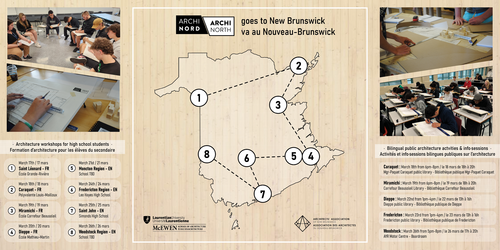Faces of Architecture – Michael Colpitts

October 04, 2018
FACES OF ARCHITECTURE
Name: Michael Colpitts
Firm: Murdock & Boyd Architects
Location: Saint John
Length of time in the profession: 12 years
What inspires your work?
It is the people and communities that will live / work / play in the buildings that I design that inspire me. Whether it is an elementary student learning in a well-lit, comfortable, and secure educational space; the fitness enthusiast working out in an energy filled cardio space; or a college student learning in a facility that is a built example of the trade they are learning, it is the people interacting with a space that motivates me.
What piece of architecture in New Brunswick piques your interest?
We are lucky to have many amazing historical structures across the province. These buildings pique my interest the most, especially churches and cathedrals. The details are often very purposeful but beautiful and the spaces are often awe inspiring.
What makes New Brunswick a great place for architects to work?
Architects in New Brunswick are very lucky to have inspiration all around us, be it amazing landscapes of the province or our built heritage. New Brunswick is also a great place to practice Architecture because we have opportunity to explore and be part of so many different types of projects. In other centres, those opportunities may not exist.
How would you describe your architectural style?
I’d say that my “style” of Architecture is contemporary, but with attempts to connect a building with its community and neighbourhood place. Not by matching the style of a building to those around, but by encouraging connection between buildings and the place where they are built, and the people they are built for.
What is one location/building you would encourage someone to visit in New Brunswick? Why?
Interaction School of Performing Arts, which is housed in the former Germain Street United Baptist Church building in Uptown Saint John. It’s fascinating, as it is one building split down the middle with one (c. 1880 Gothic Revival) Architectural style on one side, but another (c.1968 Mid-Century Modern) Architectural style on the other. Both sides contain an incredible variety of spaces, from intimate rooms to inspiring gathering spaces, and it is a fantastic example of a successful adaptive reuse project.
92
Years
of
Experience
397
Valued
Members
186
Architectural
Firms

